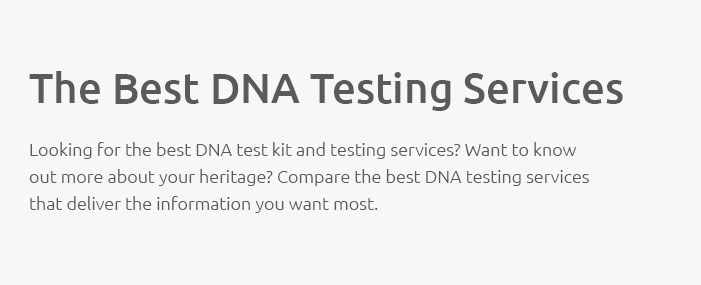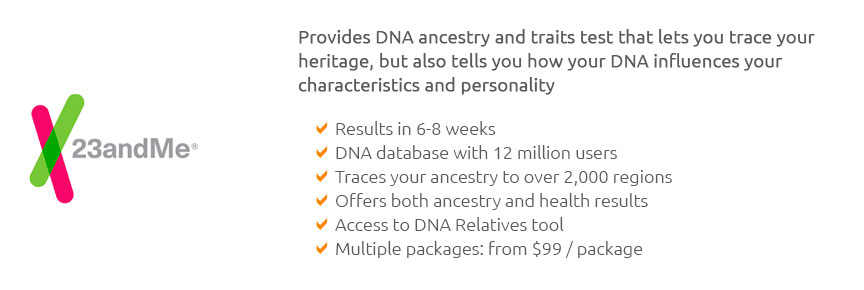 |
 |
 |
|---|
 |
 |
|---|
 |
|
|---|---|
 |
 |
 |
 |
 |
 |
 |
 |
 |
 |
 |
 |
 |
 |
 |
 |
|---|
DNA Ancestry: How It WorksIn the intricate tapestry of human history, DNA ancestry testing has emerged as a remarkable tool, unlocking the secrets of our past with an elegance that speaks to the heart of our genetic makeup. Understanding how DNA ancestry works involves delving into the fascinating realm of genetics, where our unique sequences are translated into stories of migration, kinship, and heritage. At its core, DNA ancestry testing is a scientific process that analyzes specific locations in the genome, known as markers, which are compared against a massive database to draw connections and trace lineage. As a result, it offers a window into our ancestral origins, with the ability to reveal the regions and populations our ancestors once belonged to. To begin with, DNA ancestry tests primarily focus on three types of DNA: autosomal, mitochondrial, and Y-chromosome. Each plays a distinct role in painting a comprehensive picture of one's ancestry. Autosomal DNA testing examines the 22 pairs of non-sex chromosomes inherited from both parents, providing a broad overview of one's recent ancestry from all ancestral lines. This type of test is particularly effective for building family trees and discovering relatives within the last five to seven generations. On the other hand, mitochondrial DNA (mtDNA) testing focuses on the genetic material passed down exclusively through the maternal line. Since mtDNA changes very slowly over generations, it offers insights into ancient maternal ancestry and can even connect individuals to a maternal haplogroup-a group of people who share a common ancestor on their mother's side. Meanwhile, Y-chromosome DNA testing, available only to males, traces paternal lineage by analyzing the Y chromosome inherited from the father, helping individuals identify their paternal haplogroup and learn about their father's ancestry over thousands of years. The process of DNA ancestry testing is relatively simple and non-invasive, typically involving a cheek swab or saliva sample. Once collected, the sample is sent to a laboratory where it undergoes analysis. The laboratory extracts and examines the genetic material, identifying specific genetic markers that can be used to infer ancestry. This data is then compared against vast databases containing genetic information from various populations around the world, allowing the test to estimate an individual's ethnic composition and trace their ancestral roots. One of the remarkable aspects of DNA ancestry testing is its ability to uncover hidden connections. By identifying DNA matches, individuals can discover distant relatives, reconnect with long-lost family members, or even find unknown branches of their family tree. This aspect of DNA testing is often highlighted by stories of individuals who have discovered newfound relatives and enriched their understanding of family history, adding a personal and emotional dimension to the scientific process. While DNA ancestry testing offers a wealth of information, it is important to recognize its limitations. The accuracy of results can be influenced by the size and diversity of the reference database used by the testing company, and the predictions are often probabilistic rather than definitive. Additionally, the interpretation of DNA results requires careful consideration, as genetic markers can be shared by different populations, leading to potential overlaps in ancestry estimates. Despite these challenges, the field continues to evolve, with ongoing research and advancements improving the precision and depth of ancestry analysis. In conclusion, DNA ancestry testing stands as a powerful bridge between the past and the present, offering individuals a chance to uncover their roots and explore the intricate web of human history. Whether used to confirm family lore, connect with lost relatives, or simply satisfy curiosity about one's heritage, DNA ancestry testing provides a unique lens through which we can view our place in the world. As we move forward in this ever-expanding genetic frontier, it is evident that the journey to understanding our ancestry is as much about the stories we uncover as it is about the science that makes it possible. https://www.livescience.com/62690-how-dna-ancestry-23andme-tests-work.html
The nitty-gritty. Researchers can track paternal ancestry by looking at the Y chromosome, which fathers pass to their male children. Maternal ... https://www.reddit.com/r/askscience/comments/74cdqh/how_exactly_do_dna_testing_kits_determine/
The way these commercial tests work is that they take your dna profile (which several people have explained) and compare it to people already in ... https://support.ancestry.com/s/article/AncestryDNA-Laboratory-Processing?language=en_US
The chip works by binding manufactured DNA to your DNA, making it easily readable. Communicating results. Another robot communicates the results from the chip.
|
|---|